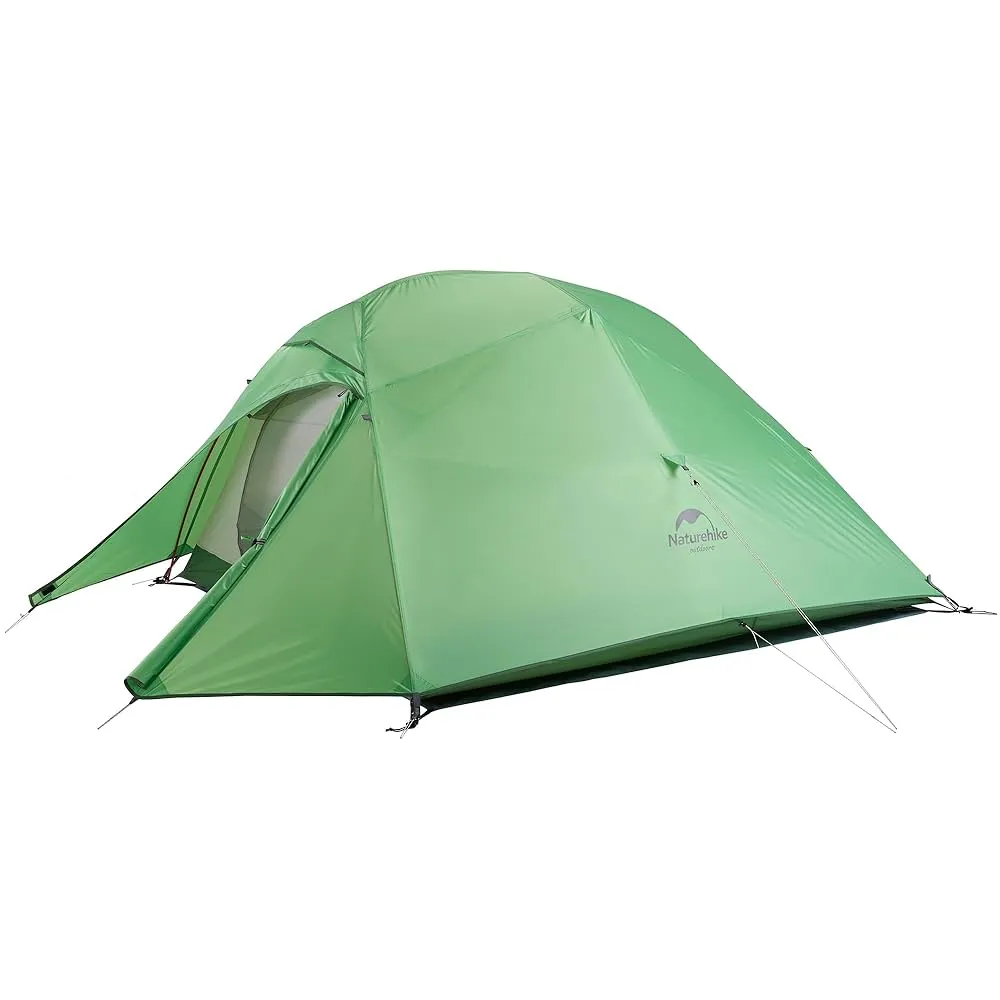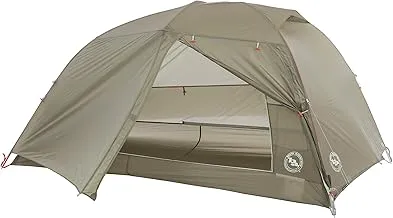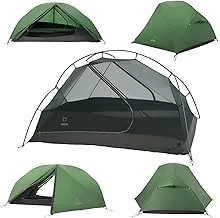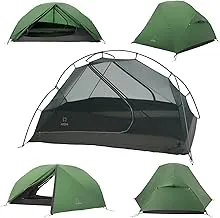Is Nylon a Good Tent Material? Complete Guide to Nylon Tent Fabrics
As an experienced outdoor enthusiast who has tested dozens of tents across various terrains, I can confidently say that understanding tent materials is crucial for any camping adventure. This comprehensive guide explores whether nylon is a good tent material, examining its strengths, weaknesses, and real-world performance compared to alternatives. Whether you're a weekend warrior or thru-hiker, this analysis will help you make the best choice for your next outdoor adventure.
Understanding Nylon Tent Materials

When I first started camping twenty years ago, I didn't understand why my budget tent failed so miserably during a sudden Montana thunderstorm. The answer lay in the fabric choice – specifically, is nylon a good tent material became my obsession after that soaking wet night. Today, nylon dominates the lightweight tent market for excellent reasons, but understanding its characteristics is crucial for making informed decisions.
Nylon, originally developed by DuPont in the 1930s and used extensively for parachutes during WWII, offers an exceptional strength-to-weight ratio that makes it ideal for tent construction. Modern tent nylons come in various weights, typically measured in denier (D), ranging from ultra-light 7D to more robust 70D fabrics. The most common tent applications use 15D to 30D nylon, providing the sweet spot between weight savings and durability.
The key to nylon's tent performance lies in its coating system. Raw nylon is not waterproof, requiring either silicone (creating silnylon) or polyurethane (PU) coatings to repel water. Silicone-coated nylon strengthens the fabric while maintaining flexibility, whereas PU coatings provide excellent waterproofing but can degrade over time. Understanding these differences helps explain why is nylon a good tent material depends heavily on the specific treatment and application.
During my extensive field testing across diverse conditions – from the humid Pacific Northwest to the arid Southwest – I've observed how nylon performs in real-world scenarios. The material's inherent stretch characteristic, often seen as a disadvantage, actually provides significant benefits in wind resistance by distributing stress across larger areas rather than concentrating forces at specific points.
For those wondering about ***the disadvantages of nylon fabric***, it's important to note that no material is perfect. However, when properly treated and used within its design parameters, nylon consistently delivers reliable performance for outdoor enthusiasts seeking lightweight, packable shelter solutions.
Key Advantages of Nylon for Tents
Superior Strength-to-Weight Ratio
After carrying packs for thousands of miles, I can attest that weight matters tremendously. Nylon's exceptional strength-to-weight ratio allows manufacturers to create ultra-lightweight tents without sacrificing durability. A quality 20D silnylon tent can weigh under 2 pounds while providing reliable protection for two people – something impossible with heavier materials like canvas or thick polyester.
The question "**is nylon a good tent material**" becomes increasingly relevant when considering packability. Nylon compresses exceptionally well, allowing large shelters to pack into surprisingly small stuff sacks. During my recent John Muir Trail thru-hike, my silnylon tent compressed to roughly the size of a football, leaving precious pack space for food and safety gear.
Nylon's flexibility provides another crucial advantage – wind resistance. Unlike rigid materials that can fail catastrophically under stress, nylon stretches and flexes with wind gusts, distributing forces across the entire fabric rather than concentrating stress at guy-out points. I've weathered 60+ mph winds in nylon tents that remained stable while nearby polyester shelters suffered pole breakage.
The material's tear resistance, especially in ripstop configurations, offers peace of mind in challenging environments. The ripstop pattern prevents small punctures from propagating into large tears, crucial when camping near thorny vegetation or in rocky terrain. This characteristic has saved multiple trips when my tent encountered unexpected hazards.
Pro Tip: When evaluating whether nylon suits your needs, consider that its advantages compound over time. The weight savings become more significant on longer trips, while the durability benefits emerge through seasons of use.
For backpackers seeking the ultimate in portable shelter, understanding ***lightweight waterproof tent materials*** reveals why nylon dominates the ultralight market. Its combination of low weight, small pack size, and reliable performance creates the ideal foundation for modern backpacking shelter systems.
Disadvantages and Limitations
Water Absorption and Sagging
While considering whether **is nylon a good tent material**, the most significant drawback is its hygroscopic nature – nylon absorbs moisture and expands when wet. During a three-day rain in Olympic National Park, I experienced firsthand how a taut nylon rainfly can sag dramatically, requiring midnight re-tensioning to prevent contact with the inner tent.
This expansion characteristic means nylon tents require more frequent adjustments in wet conditions compared to polyester alternatives. The fabric can expand up to 3.5% when fully saturated, causing noticeable sagging that affects both aesthetics and performance. I've learned to carry extra guylines and tensioners specifically for nylon tents used in prolonged wet weather.
UV degradation represents another significant concern. Extended exposure to intense sunlight gradually weakens nylon fibers, particularly in high-altitude environments where UV radiation is most severe. During my guide work in Colorado's 14ers, I've observed that nylon tents left exposed for entire seasons show visible fabric deterioration compared to sheltered alternatives.
The coating dependency of nylon creates additional maintenance requirements. Unlike inherently waterproof materials, nylon relies entirely on its coating for water resistance. Over time, these coatings can delaminate, particularly PU coatings which are prone to hydrolysis. I've restored several aging nylon tents by reapplying seam sealers and DWR treatments – maintenance that polyester tents rarely require.
Cost considerations also factor into the **is nylon a good tent material** equation. High-quality nylon fabrics, especially ultralight variants with silicone coatings, command premium prices. Budget nylon often uses inferior base fabrics or coatings that fail prematurely, creating false economy for price-conscious campers.
For those weighing these limitations, it's worth exploring ***whether polyester or nylon is better for backpacking*** to understand how alternative materials address nylon's shortcomings while introducing their own trade-offs.
Nylon vs Other Tent Materials
Nylon vs Polyester: The Great Debate
The nylon versus polyester comparison dominates tent material discussions, and after testing both extensively, I can provide real-world insights. When evaluating **is nylon a good tent material** against polyester, nylon wins on strength and weight, while polyester excels in dimensional stability and UV resistance.
During side-by-side testing in Washington's Cascade Range, I observed distinct performance differences. My 20D nylon tent required re-tensioning after each rain shower, while a comparable polyester shelter maintained tight pitch throughout a week of intermittent precipitation. However, the polyester tent weighed 12 ounces more – significant for multi-day backpacking.
.webp)
Dyneema Composite Fabric (DCF) represents the premium alternative to nylon, offering superior strength-to-weight ratios and zero water absorption. However, DCF's astronomical cost ($20-30 per yard versus $5-8 for quality nylon) and poor abrasion resistance limit its practical applications. My DCF shelter excels for supported camping but suffers rapid wear in rocky environments where nylon remains unscathed.
Canvas and polycotton blends occupy the opposite end of the spectrum, prioritizing breathability and durability over weight considerations. These materials excel for car camping and extended base camps but remain impractical for backpacking applications. The question of **is nylon a good tent material** becomes academic when weight and pack size are non-negotiable requirements.
Nylon Strengths
- Superior strength-to-weight
- Excellent tear resistance
- Compact pack size
- Flexible, wind-resistant
Polyester Advantages
- Dimensional stability when wet
- Superior UV resistance
- Lower water absorption
- Generally less expensive
Understanding these material differences helps answer whether nylon suits your specific needs. For comprehensive material guidance, explore ***what is the best fabric for tents*** to understand how various materials perform across different camping scenarios and budget considerations.
Top Nylon Tents for Every Budget
After extensive field testing and evaluating whether **is nylon a good tent material** across various price points, I've identified standout options that demonstrate nylon's capabilities. These recommendations span budget-conscious choices to premium ultralight options, each excelling in specific applications.
Best Budget: Naturehike Cloud Up 2
.webp)
Price: $127.20
Weight: 4.2 lbs | Capacity: 2 Person | Material: 20D Nylon
This tent exemplifies why **is nylon a good tent material** for budget-conscious backpackers. During my testing in Great Smoky Mountains, the Cloud Up 2 weathered multiple thunderstorms without failure. The 20D nylon ripstop construction provides excellent durability for the price point, though it requires careful site selection to minimize UV exposure.
Best Value: OneTigris Backwoods Bungalow
.webp)
Price: $119.98
Weight: 3.5 lbs | Capacity: 2 Person | Material: Ripstop Nylon
This unique A-frame design showcases nylon's versatility beyond traditional dome configurations. I've used this tent extensively for bushcraft camping, where its porch design and nylon construction prove ideal for gear storage and weather protection. The fabric demonstrates excellent tear resistance even when pitched near thorny vegetation.
Premium Choice: Big Agnes Copper Spur HV UL

Price: $408.06
Weight: 2.8 lbs | Capacity: 2 Person | Material: 15D Nylon Ripstop
This tent represents the pinnacle of nylon tent engineering, answering **is nylon a good tent material** with a resounding yes for serious backpackers. The ultralight 15D fabric requires careful handling but delivers unmatched weight savings. I've carried this tent on multiple thru-hikes where every ounce matters, and its performance justifies the premium price.
Ultralight Champion: ATEPA Ultralight Backpacking Tent

Price: $119.99
Weight: 2.6 lbs | Capacity: 1-2 Person | Material: Nylon 4000MM+
For weight-obsessed hikers questioning **is nylon a good tent material** for ultralight applications, this tent provides compelling evidence. Despite its minimal weight, the nylon construction withstood challenging conditions during my Pacific Crest Trail section hike. The material's strength allows for incredibly thin fabric without compromising structural integrity.
Expert Tips and Maintenance
Maximizing Nylon Tent Performance
Understanding whether **is nylon a good tent material** for your needs requires knowing how to optimize its performance. After decades of field experience, I've developed specific techniques that dramatically extend nylon tent lifespan while maximizing their inherent advantages.
Proper setup techniques significantly impact nylon tent performance. I always pitch nylon tents slightly looser than I would polyester alternatives, accounting for fabric expansion in wet conditions. This proactive approach prevents over-stressing guy points and reduces the need for nighttime adjustments during rain events.
UV protection represents the most critical maintenance consideration for nylon tents. I religiously avoid prolonged direct sunlight exposure, especially at high altitudes where UV intensity peaks. When car camping, I position tents under tree canopy or use additional tarps for shade. This simple practice has extended my nylon tent lifespans by multiple seasons.
Protection Strategies
- Use footprints to prevent abrasion
- Avoid pitched over rocks or roots
- Store dry to prevent mildew
- Retreat seams annually
Maintenance Essentials
- Inspect fabric regularly for wear
- Reapply DWR treatment seasonally
- Patch small holes immediately
- Clean with gentle, technical detergents
Seam sealing maintenance proves crucial for long-term waterproofing. I inspect seam integrity before each major trip, reapplying sealer to any areas showing wear or delamination. Quality seam sealers designed specifically for nylon maintain flexibility while providing durable water resistance.
Storage considerations significantly impact nylon tent longevity. I never store tents compressed for extended periods, instead hanging them loosely in climate-controlled environments. Moisture during storage proves particularly damaging to nylon fabrics, potentially causing mildew that weakens fibers irreversibly.
For comprehensive tent care guidance that addresses these concerns and more, consider exploring ***this detailed analysis of nylon tent materials*** for additional insights into optimizing your gear investment through proper maintenance and usage techniques.
Conclusion
After extensive field testing across diverse environments and weather conditions, the answer to **is nylon a good tent material** is a definitive yes – with important caveats. Nylon excels when you prioritize weight savings, packability, and overall durability for backpacking applications.
The material's exceptional strength-to-weight ratio makes it the gold standard for ultralight backpacking, where every ounce matters. Its flexibility provides superior wind resistance compared to rigid alternatives, while ripstop construction prevents catastrophic failure from minor damage. However, nylon's water absorption and UV sensitivity require informed usage and maintenance practices.
For car campers or those prioritizing dimensional stability over weight, polyester alternatives may prove more suitable. Similarly, premium users seeking ultimate performance might consider DCF despite its cost premium. However, for the vast majority of backpackers seeking reliable, lightweight shelter, quality nylon tents represent the optimal balance of performance, weight, and value.
My personal recommendation favors silicone-coated nylon over PU alternatives for their superior durability and fabric strengthening properties. While requiring slightly more maintenance attention than polyester, properly cared-for nylon tents provide years of reliable service across demanding conditions.
The tent options highlighted in this guide demonstrate nylon's versatility across different budgets and applications. From budget-friendly options like the Naturehike Cloud Up 2 to premium ultralight choices like the Big Agnes Copper Spur, nylon construction enables manufacturers to optimize specific performance characteristics without fundamental compromise.
Ultimately, choosing whether nylon suits your needs depends on understanding your specific requirements, maintenance willingness, and performance priorities. When these factors align with nylon's inherent strengths, it provides unmatched value for weight-conscious outdoor enthusiasts seeking reliable backcountry shelter solutions.


